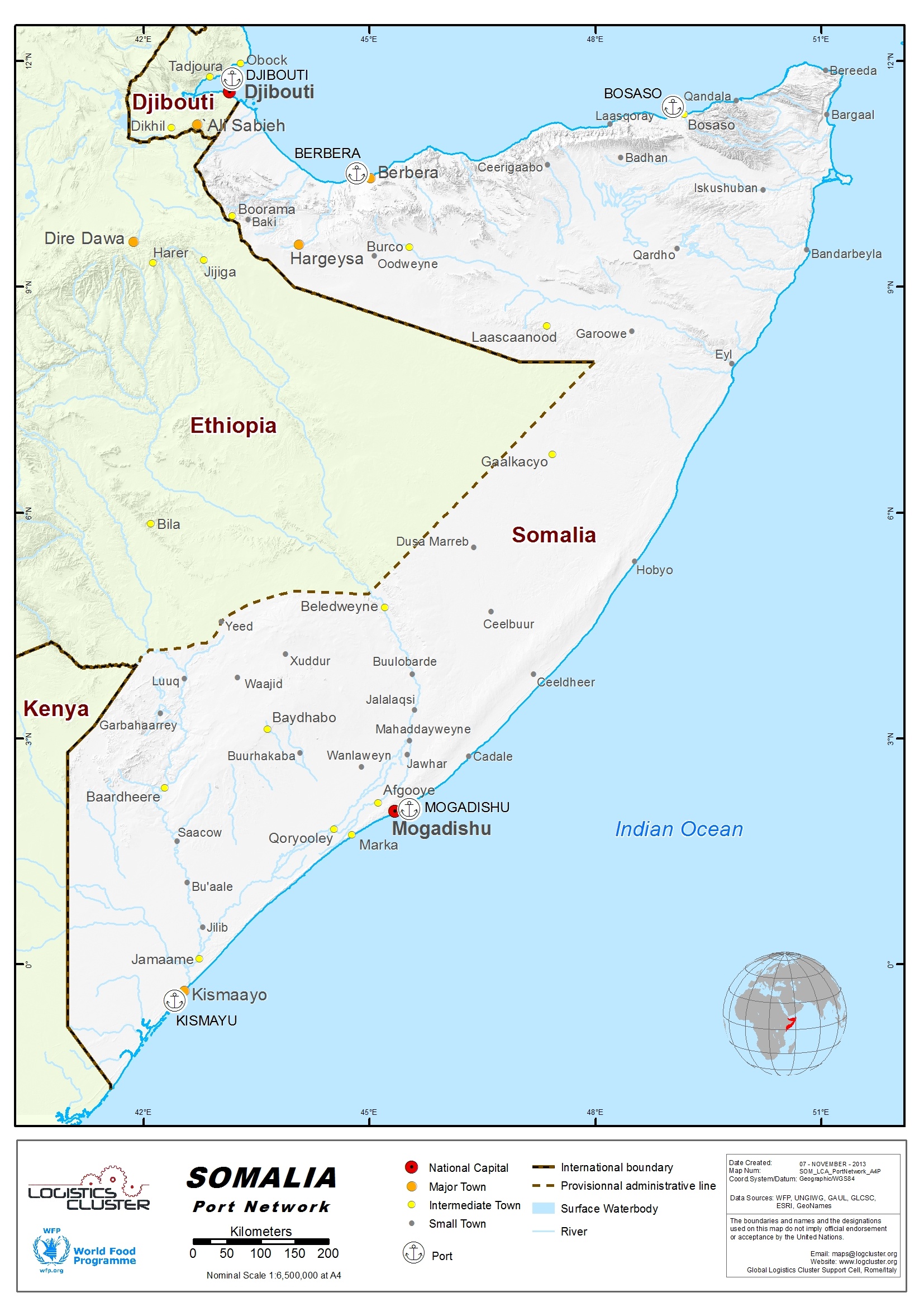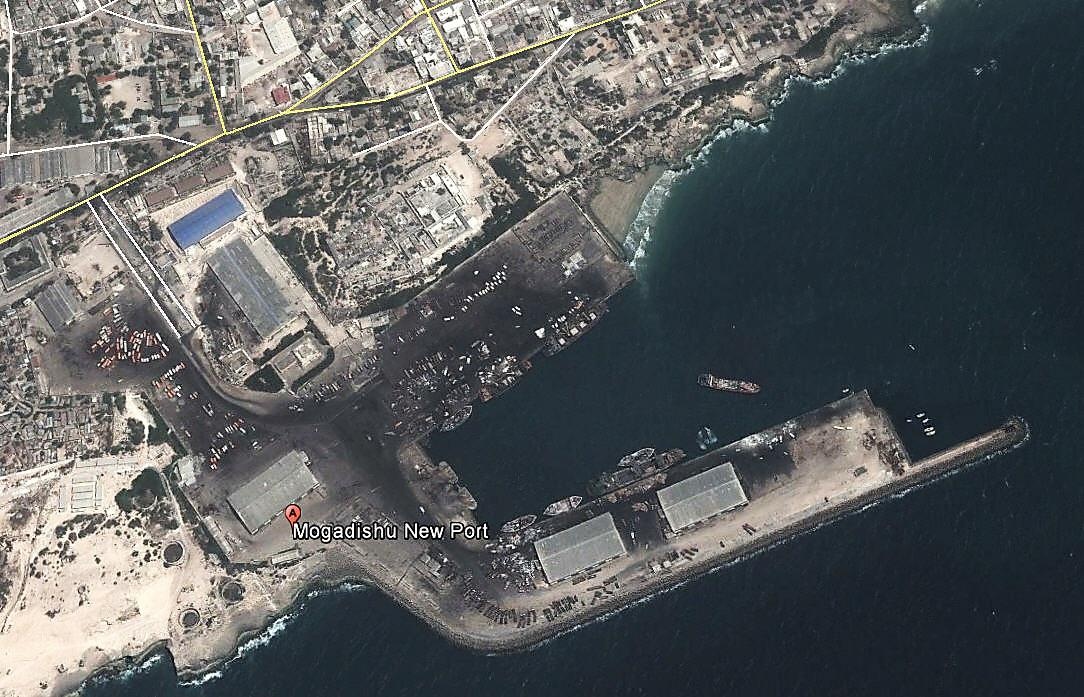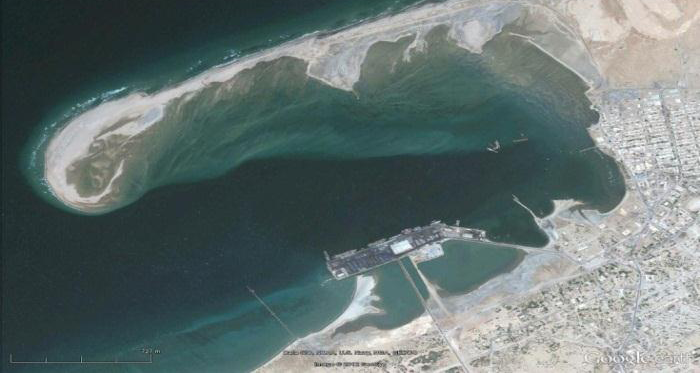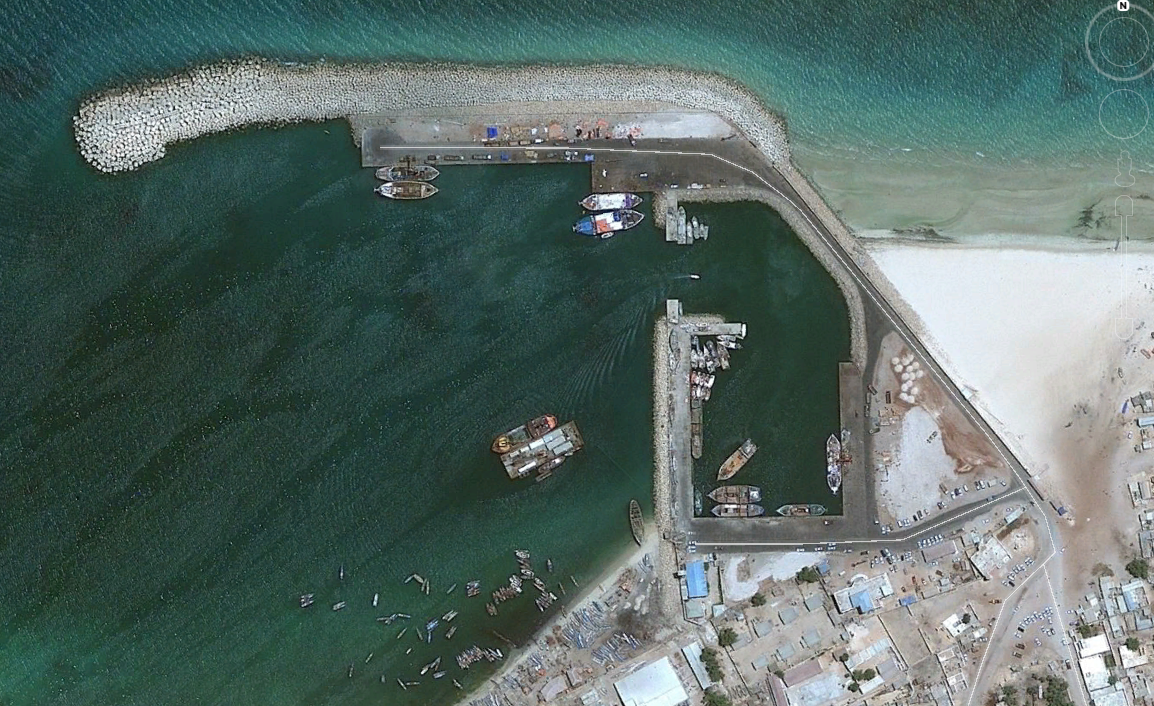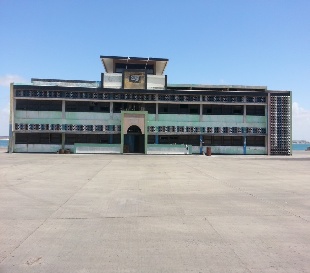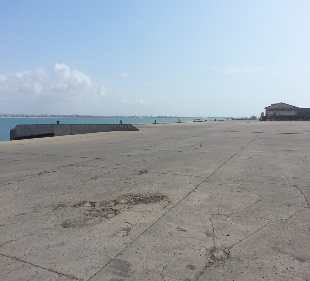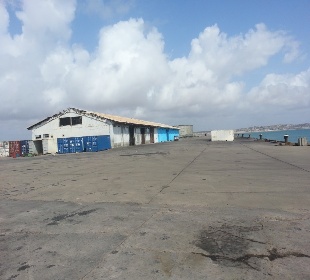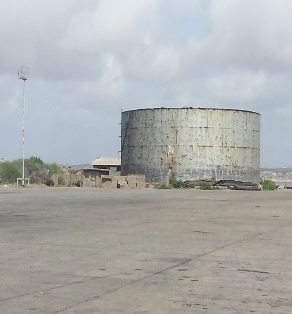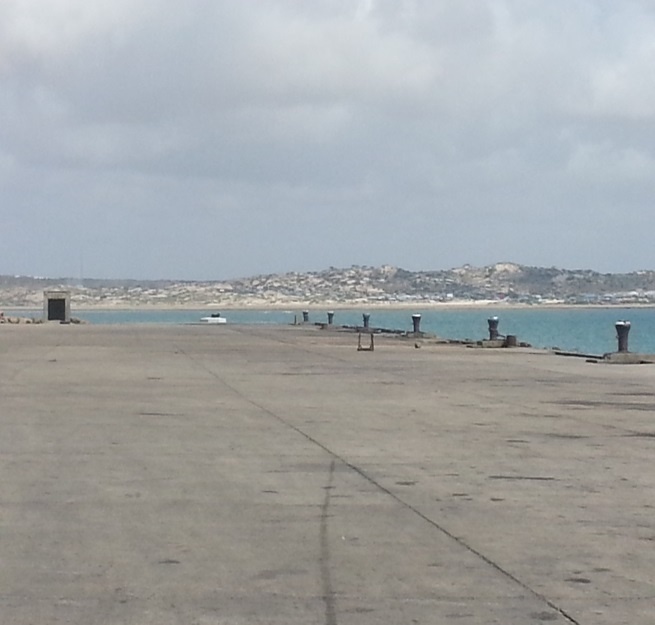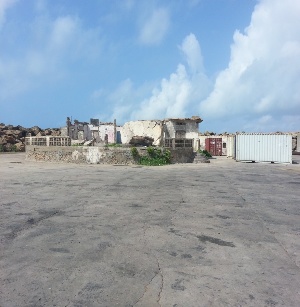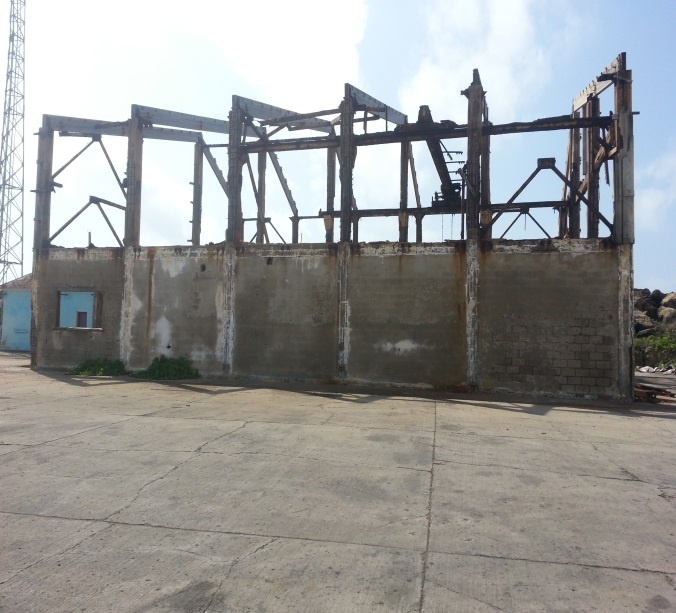2.1 Somalia Port Assessment
Somalia Port Assessment
Somalia has the longest coastline of any country in Africa at over 3,300 kms and is at the entry / departure point of one of the most important international commercial shipping lanes (the Suez Canal and via the Cape) in the world, through which the bulk of global sea-borne trade moves. Four major ports with sheltered deep water facilities handle practically all of Somalia ocean transport. They are Mogadishu, which imports much of the country’s general cargo and exports bananas, Berbera, which exports mostly livestock, Bossaso which handles livestock and general cargo and Kismayo which exports bananas, livestock and seafood
Most of Somalia’s international trade is handled by foreign vessels, supplemented by vessels from the state owned Somali Shipping Agency, which was established in 1974. Transport by coastal shipping within Somalia is limited despite the long coast line. Due to oil exploration in Somaliland and Puntland the Port of Berbera is seeing an increase in oil exploration equipment.
Somali Ports Authority (SPA) which is responsible for the administration, operation and maintenance of the country’s ports was created in 1962. Planning for the expansion and development of the ports as well as the execution of the ports infrastructural developments is the responsibility of the Ministry of Public Works and the finances of these projects are incorporated in the Governments Centralised Capital Investment Budgets. All cargo operations, except for the delivery and receipt of cargo at storage areas, are undertaken by SPA at all three ports using daily labour from labour cooperatives. Cargo handling equipment and the productivity is low as a result of insufficient mechanical handling equipment and the shortage of skilled workers. The standard of maintenance of port facilities and equipment is poor and workshop facilities are inadequate.
For information on Somalia Shipping, please see the following document:
Somalia Shipping Market Information
For information on Somalia Port Tariffs, please see the following document:
Port information can also be found at the following link: Maritime Database Information on Somalia
2.1.1 Somalia Port of Mogadishu
Key port information can also be found at: http://www.maritime-database.com/ports/topports.php
Port Overview
- 1991-2006: Closed for business as there were disagreements over who should control it
- May-December 2006: Union of Islamic Courts (UIC) takes over control of the entire city and reopens the port
- 2007-2009: Ethiopian forces, which ousted the UIC, secure the port and the WFP undertakes repair and refurbishment work
- 2009-present day: African Union and Somali government troops provide security - trade increases significantly.
- Mogadishu is Somalia’s largest port.
- In 2010 a new government was appointed, which then re-shuffled the port management and monthly revenue subsequently rose from US $0.9 million to over US $2.5 million.
- In October 2013, the federal cabinet endorsed an agreement with the Turkish firm Al-Bayrak, headed by Ahmed Salim, to manage the Port of Mogadishu for a 20-year period and also assigned Al-Bayrak responsibility for rebuilding and modernizing the port.
- In April 2014, the federal Government postponed finalization of the Seaport Management Deal pending the approval of a new foreign investment bill. The MPs also requested that the agreement be submitted to the legislature for deliberation and to ensure that the interests of the port's manual labourers were taken into account.
- In September 2014, the federal government officially delegated management of the Mogadishu Port to Al-Bayrak. Under the terms of the agreement, 55% of revenue generated at the seaport will go to the government and the remaining 45% is earmarked for the firm.
- The management transfer is expected to double the federal authorities' income from the Port. Al-Bayrak's modernization project will cost US $80 million.
- In accordance with international security protocols, the project will erect a modern port administration building and clean the ship entrance channels via underwater surveillance.
- As of September 2014, the first phase of the renovations are reportedly complete, with the second phase underway.
- During its first month of operation under Al-Bayrak, the port generated $2.7 million in service revenue.
- Total covered Storage space: 15,000 m² (Three warehouses of 5,000 m² capacity each).
- Large additional open storage space plus 30,000 m² for container marshaling yard.
- Cargo handling equipment: 9 x cranes of max capacity of 15 – 25
tons, 2 x forklifts of 5 tons and 4 x trailers of 15 tons.
Port website: Port of Mogadishu Website
|
Port Location and Contacts |
|
|---|---|
|
Country |
Somalia |
|
Province or District |
Banadir Region |
|
Town or City (Closest location) with Distance (km) |
Name: Mogadishu (km: 3 km) |
|
Port's Complete Name |
Port of Mogadishu |
|
Latitude |
2.028889 |
|
Longitude |
45.34528 |
|
Managing Company or Port Authority (If more than one operator, break down by area of operation) |
Somalia Ports Authority |
|
Management Contact Person |
Sayid Ali Moalin Abdulle – Mogadishu Port Manager +252 61 557 5590, +252 69 972 4029 portmanager@mogadishuport.com |
|
Closest Airport and Frequent Airlines to / from International Destinations |
Mogadishu Airport Airlines: Air Uganda, Turkish Airlines, Jetlink, Dallow Airlines |
Description and Contacts of Key Companies
For information on Somalia Port contact details, please see the following link:
4.2.4 Somalia Port and Waterways Company Contact List
Port Performance
|
Mogadishu Port |
||
|---|---|---|
|
Seasonal Constraints |
Yes / No |
From <month> to <month> |
|
Rainy Season |
Yes |
Apr to Jun & Oct to Dec |
|
Major Import Campaigns |
N/A |
N/A |
|
Other |
|
|
|
Vessel Calls |
N/A |
|
|
Container Traffic (TEUs) |
N/A |
|
|
Bulk (mt) |
N/A |
|
|
Break-bulk (mt) |
N/A |
|
Discharge Rates and Terminal Handling Charges
For information on Somalia Port tariffs, please see the following document:
Berthing Specifications
|
Mogadishu – Berthing Specifications |
|||
|---|---|---|---|
|
Type of Berth |
Quantity |
Length (m) |
Maximum Draft (m) |
|
Conventional Berth |
4 |
160 m |
10 m low tide |
|
Container Berth |
1 |
200 m* |
9 m low tide |
|
Silo Berth |
0 |
N/A |
N/A |
|
Berthing Tugs |
1 |
N/A |
N/A |
|
Water Barges |
Nil |
||
|
Comments |
*Container berth includes a 25m x 25m Ro-Ro platform |
||
General Cargo Handling Berths
|
Mogadishu Port – General Handling Berths |
|
|---|---|
|
Cargo Type |
Berth Identification |
|
Imports – Bagged Cargo |
Berth # 1 & 2 |
|
Exports – Bagged Cargo |
Berth # 4 & 5 |
|
Imports and Exports – Ro-Ro |
Berth # 6 |
|
Other Imports |
Crude oil: Berth # 3 |
Port Handling Equipment
|
Mogadishu Port – Handling Equipment |
|||
|---|---|---|---|
|
Equipment |
Available (Yes / No) |
Total Quantity and Capacity Available |
Comments on Current Condition and Actual Usage |
|
Dockside Crane |
Yes |
9 |
N/A |
|
Container Gantries |
No |
N/A |
N/A |
|
Mobile Cranes |
Yes |
9 |
15 – 25 tons |
|
Reach-stacker |
No |
N/A |
n/a |
|
Ro-Ro Tug-master (with Trailer) |
Yes |
4 |
15 tons |
|
Grain Elevator & Bagging Machines |
No |
N/A |
N/A |
|
Transtrainer |
No |
N/A |
N/A |
|
Forklifts |
Yes |
3 |
5 – 20 tons |
|
The port equipment is partly managed by the Port Authority but bagging equipment is outsourced. |
|||
Container Facilities
|
Mogadishu Port – Container Facilities |
|||
|---|---|---|---|
|
Description |
Chargeable Unit/Size of Container |
Rates in USD |
|
|
Ro-Ro Ship using its own equipment |
20 ft. (Full) |
$150 |
|
|
40 ft. (Full) |
$250 |
||
|
Ro-Ro using port equipment |
20 ft. |
Full |
120 |
|
Empty |
$70 |
||
|
40 ft. |
Full |
$280 |
|
|
Empty |
$100 |
||
|
Containership FCL/LCL unit box |
20 ft. |
Full |
$140 |
|
Empty |
$70 |
||
|
40 ft. |
Full |
$270 |
|
|
Empty |
$140 |
||
|
Mogadishu Port - Facilities |
||
|---|---|---|
|
Facilities |
20 ft |
40 ft |
|
Container Facilities Available |
Yes |
Yes |
|
Container Freight Station (CFS) |
No |
No |
|
Refrigerated Container Stations |
No |
No |
|
Other Capacity Details |
||
|
Daily Off-take Capacity (Containers per day) |
Not known |
N/A |
|
Number of Reefer Stations (connection points) |
Nil |
N/A |
|
Emergency Off-take Capacity |
Nil |
N/A |
|
Off-take capacity of gang shift (in containers per shift) |
1,000 mt/day |
N/A |
Since Albayrak took over the port in September 2014, the port
mainly handles containerized cargos from various ports, three
liners fully operate in Mogadishu Alport (MAP). They are (MSC, CMA
CGM and Sima Marine). Containers are de-stuffed inside the port
which made the whole port open spaces container yards with full and
emptied containers. Business people adapted to the containers and
all incoming cargo are 80% containerized, apart from fuel, cement
and other construction items.
There were few times vessels with bulk cargo called the port. But mainly break bulk cargos are common goods received.
Customs Guidance
In 1960 during independence, The Somali government established a
custom law for the UN and international humanitarian Agencies that
exempts them from paying taxes. Still the current Federal
government follow that law which is under article 14. Tax exemption
is processed through the Customs Department of the Ministry of
Finance. Without the clearance of this department no imports or
exports can be released as it’s the responsible agency that deals
with customs matters for both Sea Ports and Airports.
The Customs department operates under a national law and is
authorized to examine the cargo for description verification,
specification volume and/or quantity to assess its value in order
to determine the correct taxes and customs duty.
For information on Somalia Port customs guidance, please see the following link: 1.3 Somalia Customs Information
Terminal Information
Grain and Bulk Handling
Nectar Company provides bagging services in the main Ports of Mogadishu, Berbera and Bossaso. Informed at least four to six weeks prior to the arrival of a vessel, they are able to install mobile units and provide the services as required. The company is also planning to provide the same services at Kismayo Port.
| Nectar Group Ltd. - 1 Ashton Gate, Ashton Road, Essex, RM3 8UF, United Kingdom | ||
|---|---|---|
|
Name |
Title |
E-mail Address / Phone Number |
|
Christopher Boughton |
Director |
|
|
Guy Wilkes |
Commercial Director |
|
|
Chris Leonard |
Commercial Manager |
|
|
Commercial Team |
N/A |
|
| Abdullahi Awil Kuukay | Mogadishu Representative for NECTAR |
+25261 6269332 |
It is possible for ships with cranes to be used at the port for offloading cargo.
Main Storage Terminal
|
Port of Mogadishu – Main Storage Terminal |
||
|---|---|---|
|
Storage Type |
Number of Storage Facilities |
Area (m²) |
|
Bagged Cargo |
3 warehouses of 5,000 m² each |
15,000 m² |
|
Refrigerated Cargo |
None |
N/A |
|
General Cargo |
1 Open Storage |
30,000 m² |
Stevedoring
- Stevedoring work or handling on board ships includes truck and trailer loaders, unloading and stacking in transit sheds and is charged as follows.
- Labour is sufficient and the ports operate 24/7 except Friday morning hours.
|
Description |
Chargeable Unit |
Rates in USD |
|---|---|---|
|
Break Bulk Cargo |
Bags/mt |
$27 |
|
General Cargo |
Cartons/mt |
$30 |
Hinterland Information
- The transport union is the main body that sources the trucks of different sizes, as only road transport is available in Mogadishu.
- Around 3,000 trucks are controlled by union and they have different sizes and are old.
- Sizes vary from 10 – 25 ton trucks. The older trucks are mostly used for short distance and shunting.
- Changes are expected to continue taking place as more and more transport companies emerge and with modern trucks, which are competing to take over from the old union trucks.
Port Security
- Port security is being reinforced day by day and UIC security guards are in control.
- The entrance to the Port of Mogadishu is cordoned off with a rope surrounding the perimeter and manned by a few armed guards and security officers.
- Vehicles and visitors are screened before they are allowed inside the Port.
- There is a shoes-off condition when entering offices and religious codes strictly observed.
- Security at Mogadishu Port is provided by the African Union Mission in Somalia (AMISOM).
|
Port of Mogadishu – Security |
||
|---|---|---|
|
ISPS Compliant (Yes / No) |
No |
|
|
Current ISPS Level |
N/A |
Level 1 = Normal, Level 2 = Heightened, Level 3 = Exceptional |
|
Police Boats |
N/A |
|
|
Fire Engines |
N/A |
|
2.1.2 Somalia Port of Berbera
Key port information can also be found at: Website of the Maritime Database on Berbera Port
Port Overview
Berbera Port is on the Northern coast of Somalia and is located on the Gulf of Aden. The Port is owned and operated by the Somaliland authorities. In addition to an oil terminal the facilities can accommodate containers, general cargo, and bulk cargo.
The port foundation is traced back more than a hundred years, and the current place, a linear wharf of 300 meters, was established in 1968 by Soviet Union and expanded to a 350 meters linear wharf in 1984 by United States of America. Since then the port has developed numerous properties as well as constructions.
The Port's task hasn’t changed over the years but its scope of services has expanded considerably. The port contributed significantly in the development of the Somaliland community.
For more generic information on Berbera Port, please select the following document: Somaliland Berbera Port Additional Information
Note: The information provided in the attached documents, which has been taken from the old DLCA, does not match the structure of the new LCA and is therefore provided separately.
Port website: Website of the Berbera Port
|
Port Location and Contacts |
|
|---|---|
|
Country |
Berbera, Somalia |
|
Province or District |
Berbera District |
|
Town or City (Closest location) with Distance (km) |
Name: Berbera (1 km) and Hargeisa (160 km) |
|
Port's Complete Name |
Berbera Port |
|
Latitude |
10° 26' 00" N |
|
Longitude |
45° 01' 00" E |
|
Managing Company or Port Authority (If more than one operator, break down by area of operation) |
Berbera Port Authority (Somaliland Government) |
|
Management Contact Person |
Berbera port Manager: Deputy Port Manager: |
|
Closest Airport and Frequent Airlines to / from International Destinations |
Berbera Airport (7 km) Hargeisa Airport (160 km) |
Port Picture
Description and Contacts of Key Companies
4.2.4 Somalia Port and Waterways Company Contact List
| Berbera Port Authority (Somaliland Government) | ||
|---|---|---|
|
Contact |
Office Number | Mobile Number |
| Main Office | +252-2-740 198 | +252-63-444 6123 |
| Port Control | +252-2-740 333 | +252-63-444 6157 |
| Security Office | +252-2-740 444 | +252-63-444 6191 |
| PFSO | +252-2-740 733 | +252-63-444 6154 |
Port Performance
Entry into the harbour is straightforward except during the strong windy conditions that occur frequently during both the NE and SW monsoon periods. These winds tend to blow beam-on to vessels in the approach channel and at the commercial quays. With the lack of tug power to assist in maneuvering, ship safety is not optimal. In addition, a lack of effective navigation aids limits vessel entry and departure operations to daylight hours, from 6 am to 6 pm. The situation is occasionally aggravated by dust storms generated by strong winds that impair visibility.
|
Berbera Port – Seasonal Constraints |
||
|---|---|---|
|
Seasonal Constraints |
Yes / No |
From <month> to <month> |
|
Rainy Season |
Yes |
July to Sept |
|
Major Import Campaigns |
Yes |
Local Authorities, Humanitarian agencies, and commercial sector |
|
Other |
|
|
|
Berbera Port – Performance (2012) |
|
|---|---|
|
Vessel Calls |
576 |
|
Container Traffic (TEUs) |
21,538 |
|
Bulk (mt) |
150,425 |
|
Break-bulk (mt) |
521,300 |
Discharge Rates and Terminal Handling Charges
For information on Somalia Port Charges, please see the following document: Somalia Port Tarrifs
Berthing Specifications
|
Berbera Port - Berthing Specifications |
|||
|---|---|---|---|
|
Type of Berth |
Quantity |
Length (m) |
Maximum Draft (m) |
|
Conventional Berth |
6 |
650 |
9 m at low tide, and 13 m at high tide |
|
Container Berth |
Nil |
Nil |
Nil |
|
Silo Berth |
Nil |
Nil |
Nil |
|
Berthing Tugs |
1 |
1,500 HP |
|
|
Water Barges |
Available alongside quay through hoses. Rate: 15 – 20 tons per hour |
||
|
Port of Berbera – Berthing Specifications |
|||
|---|---|---|---|
|
Type of Berth |
Quantity |
Length (m) |
Draft (m) |
|
Conventional Berth |
5 |
650 m |
9.5 m low tide 13 m high tide |
|
Container Berth |
0 |
N/A |
N/A |
|
Silo Berth |
0 |
N/A |
N/A |
|
Berthing Tugs |
1 |
N/A |
N/A |
|
Water Barges |
Nil |
||
|
Comments |
|
||
General Cargo Handling Berths
|
Berbera Port – General Cargo Handling Performance |
|
|---|---|
|
Cargo Type |
Berth Identification |
|
Bulk Cargo |
2,000 to 2,500 mt per ship/day |
|
Bagged Cargo |
1,000 mt per ship/day |
|
General Cargo |
1,000 to 1,800 mt per ship/day |
|
Container Cargo |
Approx. 6 containers per hour |
Port Handling Equipment
- Doubling the current container handling from six to twelve moves per hour is well within the realm of possibility. Acquisition of more materials handling equipment in conjunction with more efficient procedures could drastically improve vessel turn around and reduce time in port. This opens up the port for increased vessel traffic and reduces shipping costs to Berbera.
- The main port equipment and facilities include the Mayara and Tamara lighthouses at the entry of the port.
- Cargo handling equipment (10 x mobile cranes (70 mt), 2 x forklifts of 32 mt).
- Storage warehouses: Total area 5,760 m² with storage capacity up to 120,000 mt, open storage (64,000 m²) is available plus a container storage yard.
- In 2014 Berbera Port Authority initiated a major plan to expand the dry port by compacting an area of 700 m x 300 m and placing asphalt in which will be handled for containers as an additional container terminal. The construction is still ongoing and so far the authority has managed to accomplish 300 m x 100 m out of the planned development. The plan is to complete the new terminal by the end of July 2016.
-
The port currently only accommodates 35,000 tons
- The expansion of the Port of Berbera could cost more than $65 million. Ali Omar Mohamed, in charge of the Port of Berbera, recently stated that he imagines the port becoming 20 meters (22 yards) deep compared to its current 11.5 to 12 meters depth. At 20 meters, the port could accommodate the world’s largest container ship, weighing 300,000 tons. The expansion of the port is very much a documented expectation for the future of Somaliland (see the National Development Plan 2012-2016), but attracting private investors into the port remains an ongoing process.
|
Berbera Port – Handling Equipment |
||
|---|---|---|
|
Type |
Quantity |
Maximum Capacity |
|
Shore Cranes |
None |
N/A |
|
Mobile Cranes |
10 |
10 – 70 mt |
|
Forklifts |
2 |
32 mt |
|
Tractor Head |
15 |
2.5 – 12 mt |
|
Reach Stackers |
1 |
45 mt |
|
Tug Boat |
1 |
1,500 HP |
Container Facilities
The increased usage of containers has contributed to the improvement of Berbera Port efficiency in vessel turnaround and handling. There is a consistent positive trend in the number of containers handled: in 2012 the port handled 21,538 containers, an improvement of 22% from 2009. Maersk and PIL Lines signed an agreement with Port Authorities to operate a regular service to the Port of Berbera and are represented in Berbera and the capital Hargeisa.
|
Berbera Port – Container Handling |
20 Ft. |
40 Ft. |
|---|---|---|
|
Container Facilities Available |
Yes |
Yes |
|
Container Freight Station (CFS) |
No |
No |
|
Refrigerated Container Stations |
No |
No |
|
Daily Take Off Capacity (Containers per day) |
120 |
120 |
|
Number of Reefer Stations (connection points) |
Nil |
Nil |
|
Emergency Take-off Capacity (Give an indication) |
Nil |
Nil |
|
Off take capacity of gang shift (in Containers per shift) |
Nil |
Nil |
Terminal Information
Multipurpose Terminal
Maps from Oceans Beyond Piracy (OBP), which is an independent NGO working together with Somali authorities to support investors and donors for the development of Berbera Port, show that the port has recently emerged as an important and strategic logistics hub widely used by humanitarian agencies and industry alike.
Grain and Bulk Handling
Bulk Grain Operations: Silo construction was never completed.
The silos are unusable when bulk grain is offloaded, it must be
unloaded directly into trucks on the quay.
Bagging operations can be done on the quay side. There are no
installed bagging facilities at the Ports of Berbera, Bossaso,
Mogadishu or Kismayo.
Alternatively PortServ Company provides the services at the Ports
when informed and contracted well in advance of a vessel arrival
with Bulk Cereals.
PortServ provides direct bagging from ship discharge.
Main Storage Terminal
The Port of Berbera is owned and operated by the Somaliland Administration through an autonomous body called the Berbera Port Authority (BPA). The main port equipment and facilities include the Mayara and Tamara lighthouses at the entry of the port.
- Cargo handling equipment: 10 x mobile cranes (10 – 70 mt) and 2 x forklifts (32 mt).
- Storage warehouses (total area 5,760 m² with storage capacity up to 120,000 mt and open storage of 64,000 m² are available, plus a container storage area.
Stevedoring
Stevedoring is the movement of cargo from the ship to the stock for imports and from the stick to ship in the case of export. For any stevedoring services performed the following charges shall be applied:
|
Berbera Port – Stevedoring Rates |
||
|---|---|---|
|
General Cargo |
Rate per ton or part thereof US$ |
|
|
|
Regular hour |
Overtime |
|
Discharged or loading |
$3.50 |
$7.00 |
|
Discharged or loading transhipment cargo |
$3.50 |
$7.00 |
|
Cargo shipped and re-landed |
$7.20 |
$14.40 |
|
Cargo landed & reshipped |
$8.00 |
$16.00 |
|
Shifting within hatches |
$4.00 |
$8.00 |
|
Shifting from hold to hold |
$7.20 |
$14.40 |
|
Shifting on deck |
$3.80 |
$7.60 |
On 8th August 2015 Berbera Port Authority issued a new tariffs of empty containers which was effective from 1st September 2015.
The increase of tariffs are $30 and $50 for 20 TEU and 40 FEU respectively.
In addition the authority has increased port handling charges for containerized cargo as below effective 1st Jan 2016:
- Cargo handling charges: port dues 2.5 per ton
- Container handling charges:
| Container | 20 ft | 40 ft |
|---|---|---|
| Port dues | 204 | 404 |
| THC | 150 | 210 |
Extension: there is a round of extension for Berbera port during the year 2015.
- Purpose: the purpose of extension at Berbera port is to use containerized cargo as Container terminal yard.
- International Agreement: There is no currently agencies deal with agreement for Berbera port.
- Local Agreement: There is no local agencies currently deal with for Berbera port.
Hinterland Information
There is an organized security system which requires a gate pass for people to move cargo out of the port. Trucks of various sizes are available for hire. In addition to this, there is a union transport which provides the trucks; around 4,000 trucks are registered with them. Truck capacities are from 10 mt to 30 mt, among these there are also old trucks which cannot go beyond the town. The Union of Truck owners is capable of providing enough trucks for transporting goods arriving or leaving the Port.
Port Security
|
Berbera Port – Security |
||
|---|---|---|
|
ISPS Compliant (Yes/No) |
No |
|
|
Current ISPS Level |
1 |
Level 1 = Normal, Level 2 = Heightened, Level 3 = Exceptional |
|
Police Boats |
No |
|
|
Fire Engines |
No |
|
2.1.3 Somalia Port of Bossaso
Key port information can also be found at: http://www.maritime-database.com/ports/topports.php
Port Overview
- Bossaso Port is the main seaport for Puntland and Central region of Somalia.
- Bossaso Port was constructed during the mid-1980s by the Siad Barre administration for annual livestock shipments to the Middle East.
- In January 2012, a renovation project was launched and KMC were contracted to upgrade the harbor. The initiative's first phase saw the clean-up of unwanted materials from the dockyard and was completed within a month.
- The second phase involved the reconstruction of the port's adjoining seabed, with the objective of accommodating larger ships.
|
Port Location and Contacts |
|
|---|---|
|
Country |
Somalia |
|
Province or District |
Bari Region – Puntland |
|
Town or City (Closest location) with Distance (km) |
Name: Bossaso (1 km) |
|
Port's Complete Name |
Bosasso Port |
|
Latitude |
11.29081 |
|
Longitude |
49.18019 |
|
Managing Company or Port Authority (If more than one operator, break down by area of operation) |
Ministry of Marine Transport and Ports |
|
Management Contact Person |
Abdimadjid Samatar Mohamed – Port Manager |
|
Closest Airport and Frequent Airlines to / from International Destinations |
Airport Name: Bossaso Airport (5 kms) |
Description and Contacts of Key Companies
For information on Somalia Port contact details, please see the following link:
4.2.4 Somalia Port and Waterways Company Contact List
Port Performance
- Bossaso Port draft is 9 meters; the berth can only accommodate one ship at a time.
- There is no congestion reported of late. Humanitarian cargo does get priority although in principal, berthing is on first come first serve basis.
- Sometimes it has been observed that livestock and building materials ships get priority.
- Waiting time depends on cargo type. The main hindrance to the port is its smallness in structure of 150m in length and therefore cannot handle large numbers of vessels.
|
Bossaso Port – Seasonal Constraints |
||
|---|---|---|
|
Rainy Season |
Yes |
April to June and October to December |
|
Major Import Campaigns |
N/A |
N/A |
|
Other |
Livestock carriers get berthing priority so delays can occur especially at times surrounding religious festivals. |
|
|
Bossaso Port – Handling Figures |
2012 |
2013 |
|---|---|---|
|
Vessel Calls |
93 |
|
|
Container Traffic (TEUs) |
1,212 |
|
|
Bulk (mt) |
Nil |
Nil |
|
Break-bulk (mt) |
4,556 |
1,096 |
Discharge Rates and Terminal Handling Charges
For information on Somalia Port tariffs, please see the following document:
Berthing Specifications
|
Port of Bossaso – Berthing Specifications |
|||
|---|---|---|---|
|
Type of Berth |
Quantity |
Length (m) |
Maximum Draft (m) |
|
Conventional Berth |
Information not available |
Information n/a |
7 m |
|
Container Berth |
Information n/a |
Information n/a |
Nil |
|
Silo Berth |
0 |
N/A |
N/A |
|
Berthing Tugs |
NA |
||
|
Water Barges |
NA |
||
General Cargo Handling Berths
|
Port of Bossaso – General Cargo Handling Berths |
|
|---|---|
|
Cargo Type |
Berth Identification |
|
Imports – Bagged Cargo |
Conventional Berth |
|
Exports – Bagged Cargo |
N/A |
|
Imports and Exports – RoRo |
N/A |
|
Other Imports |
N/A |
Port Handling Equipment
|
Port of Bossaso – Port Handling Equipment |
|||
|---|---|---|---|
|
Equipment |
Available (Yes / No) |
Total Quantity and Capacity Available |
Comments on Current Condition and Actual Usage |
|
Dockside Crane |
Yes |
N/A |
N/A |
|
Container Gantries |
N/A |
N/A |
N/A |
|
Mobile Cranes |
Yes |
N/A |
N/A |
|
Reachstacker |
N/A |
N/A |
N/A |
|
RoRo Tugmaster |
N/A |
N/A |
N/A |
|
Grain Elevator & Bagging Machines |
No |
N/A |
N/A |
|
Transtrainer |
N/A |
N/A |
N/A |
|
Forklifts |
Yes |
N/A |
N/A |
|
Comments |
Cranes, forklifts, trailers are privately owned. Port has 6 forklifts that belong to private people and they carry from 20 – 40 mt capacity |
||
Container Facilities
|
Port of Bossaso - Container Facilities |
||
|---|---|---|
|
Facilities |
20 ft |
40 ft |
|
Container Facilities Available |
Yes |
Yes |
|
Container Freight Station (CFS) |
No |
No |
|
Refrigerated Container Stations |
No |
No |
|
Daily Off-take Capacity (Containers per day) |
+100/day |
n/a |
|
Number of Reefer Stations (connection points) |
No |
n/a |
|
Emergency Off-take Capacity (Give an indication) |
Nil |
n/an/a |
|
Off-take capacity of gang shift (Containers per shift) |
Nil |
|
Customs Guidance
Documentation process required is as follows:
- Before arrival of the vessel clearance letter from H.E the President of Puntland or his vice President.
- Cargo certificates: Phytosanitary Certificate, Certificate of Origin, Re-export certificate, Fumigation Certificates, NNCR or B/L and Cargo manifest for eventual customs clearance Stowage/cargo plan and NOR (Notice of Readiness) tendered upon arrival/berthing
- During Discharge Daily progress report of shipment discharged Daily superintendent report
- After Discharge Final Vessel discharge report Superintendent final report
For information on Somalia Customs details, please see the following link: 1.3 Somalia Customs Information
Terminal Information
Grain and Bulk Handling
- There are no installed bagging facilities at the Port of Bossaso.
- PortServ Company provides the services at the port when informed and contracted well in advance of a vessel arrival with bulk cereals. PortServ also provides direct bagging from ship.
Main Storage Terminal
|
Port of Bossaso – Main Storage Terminal |
||
|---|---|---|
|
Storage Type |
Number of Storage Facilities |
Area (m²) |
|
Bagged Cargo |
Nil |
Nil |
|
Refrigerated Cargo |
Nil |
Nil |
|
General Cargo |
Nil |
Nil |
Stevedoring
- Private companies offer stevedoring services.
- Labour is abundant and readily available.
- No incentives are required.
- Labour is guided by working hours that has religion bearing.
Hinterland Information
- All transporters will deliver Galkayo and the Central region.
- Geographically difficult areas for delivery are Alula and Qandala districts of Bari region. In-land corridor Hargeisa – Berbera – Bossaso and Galkayo is used for internal transfer.
- This corridor is activated in case of emergency transfer.
- Customs and border cross clearances are required for any convoy from Somaliland to Puntland. In this case two signed and stamped letters have to be prepared.
- When letters are ready they should be submitted to the Ministry of Finance and Interior for approval in Garowe. Original approved requests are then sent back to Bossaso.
Port Security
|
Port of Bossaso – Port Security |
||
|---|---|---|
|
ISPS Compliant |
No |
|
|
Current ISPS Level |
Nil |
Level 1 = Normal, Level 2 = Heightened, Level 3 = Exceptional |
|
Police Boats |
Nil |
|
|
Fire Engines |
Nil |
|
2.1.4 Somalia Port of Kismayo
Key port information can also be found at: http://www.maritime-database.com/ports/topports.php
Port Overview
The Port of Kismayo was built in 1966 for the purpose of exporting bananas and other small products and importing other agricultural machineries as well as other goods, as the road between Mogadishu and Kismayu was only accessible during the dry season therefore, the port was to cover the needs of the lower Jubba. After more than 20 years the port has not been maintained.
|
Port Location and Contacts |
|
|---|---|
|
Country |
Somalia |
|
Province or District |
Lower Jubba Region |
|
Town or City (Closest location) with Distance (km) |
Name: Kismayo (2 kms) |
|
Port's Complete Name |
Kismayu Port |
|
Latitude |
-0.365278 |
|
Longitude |
42.54306 |
|
Managing Company or Port Authority |
Jubba Interim Administration |
|
Management Contact Person |
Abdullahi Dubad Shiil Port Manager, Kismayo Port +252616630000/+252615571455 |
|
Closest Airport and Frequent Airlines to / from International Destinations |
Airport Name: Kismayo Airport Airlines: Central Airline, Hajjara Airline, Blue Sky Airline |
Port Picture
Description and Contacts of Key Companies
There are no registered companies that deal with the subject matter in terms of maritime rules, but local private companies can be found.
The condition of Kismayo seaport is not good since there have been no repairs or maintenance made for a long period of time. Buildings that have collapsed due to lack of maintenance cause hazards and makes the port dangerous to operate in. It has no toilets, electricity lightening and safe water for drinking.
For information on Somalia Port contact details, please see the following link: 4.4 Somalia Port and Waterways Company Contact List
Port Performance
- 80% of the port facilities are out of use.
- There is no congestion at the port manifested by the number of vessels that call at the port, but priority is always given humanitarian cargo.
- Currently there is an established procedure for inspection of ships carrying food to produce Phytosanitary and Drafting Certificates.
- Since the facilities are not complete, including offloading cranes, forklifts and other equipment to handle the goods during the offloading, it may take longer than expected.
- Twice a month vessels for the Mediterranean Shipping Company call with containerised cargo.
- Only Hormuud Business company imports goods in bulk (they specially import sugar in bulk) and sometimes does break bulk in Kismayo.
|
Port of Kismayo – Seasonal Constraints |
||
|---|---|---|
|
Rainy Season |
Yes |
From May to Sept |
|
Major Import Campaigns |
N/A |
N/A |
|
Other |
N/A |
N/A |
|
Port of Kismayo – Handling Figures |
|
|---|---|
|
Vessel Calls |
Only local vessels |
|
Container Traffic (TEUs) |
N/A |
|
Bulk (mt) |
N/A |
|
Break-bulk (mt) |
N/A |
Discharge Rates and Terminal Handling Charges
It is negotiable with the local authority, since Somali shipping laws office is not currently in charge of the ports, hence the local authorities will negotiate with the freight carriers before berthing in.
For information on Somalia Port tariffs, please see the following document: Somalia Port Tariffs
Port Handling Equipment
There is no handling equipment in the port of Kismayo. Cranes are hired from the market during stevedoring. There is only one RO-RO tug.
|
Port of Kismayo – Port Handling Equipment |
|||
|---|---|---|---|
|
Equipment |
Available |
Total Quantity and Capacity Available |
Comments on Current Condition and Actual Usage |
|
Dockside Crane |
N/A |
N/A | N/A |
|
Container Gantries |
N/A |
N/A | N/A |
|
Mobile Cranes |
Yes |
35-50 tons |
Sometimes the crane boom has to be evaluated to determine if it can handle the service |
|
Reach stacker |
N/A |
N/A | N/A |
|
RoRo Tugmaster |
N/A |
N/A | N/A |
|
Grain Elevator & Bagging Machines |
Yes | N/A |
Obtainable in the market |
|
Transtrainer |
N/A |
N/A | N/A |
|
Forklifts |
N/A |
N/A | N/A |
Customs Guidance
The new interim administration of Jubbaland state is expected to
set up custom offices for both seaport and airport as early as
possible. This will be subject to change if the government emanates
new draft laws regulating the fiscal laws nationwide.
No websites are available for the respective custom details.
There have been no standardized procedures for customs clearance in the port of Kismayo and it is hard to know if there are amendments on the existing ones. The Ministry of Finance and the Port Authority are, however, line ministries.
The Ministry of Information, Transport and Communication/Kismayo Port Authority and the Ministry of Finance jointly act as the regulatory body. They are responsible for checking all port operations and have no defined roles. The director is the head of all activities in Kismayo. They are assisted by the (AMISOM) Kenya Navy at the port in patrolling and checking of vessels.
For information on Somalia Customs details, please see the following link: 1.3 Somalia Customs Information
Terminal Information
Multipurpose Terminal
All that existed but for now remain non-operational.
Grain and Bulk Handling
Handling is possible if the ships have their own cranes and can be stored for short time in the existing precarious conditions of the warehouses.
Main Storage Terminal
There are only four warehouse facilities available in Kismayo port; all the warehouses belong to the port and are managed by the Port Authority.
Two of the warehouses in the port are being used by WFP and IOM. WFP warehouse is the largest warehouse with capacity 1,400 mt, and the rest are small.
Of the 3 main warehouses in Kismayo port, only one can be used for storage while the other 2 require rehabilitation.
Stevedoring
-
Hired casual workers for a day or two depending on the length of the activity.
- No formal stevedoring service exists but local individuals can provide.
Hiterland Information
- Items are moved out of the port by trucks and other small carriers directly to the destination of the goods and their capacity varies is between 25 – 40 mt.
- There are small unions that work periodically but they are not permanent.
- Kismayo has only one tarmac road that runs at the center of the town joining the airport, seaport and the presidential palace 15-18 km. Since the town of Kismayo has changed hands between militias multiple times, this road was adversely affected. It has been recently renovated by DAI-USAID funded organization. This same road extends to Jilib via Bulogadud-Gobweyn-Jamame and beyond Kismayo.
- This road is one of the most dangerous in Somalia, not only because of the terrain of the land and the status of the road but there are also over 10 illegal checkpoints and militia presence. At Jilib one branch goes to Mogadishu, another one to Afmadow while one joins Jilib to Bualle.
- Besides this there are other number of feeder roads that people and vehicles use to travel between the five villages of Kismayo. These feeder roads are equally in poor condition some of them are blocked by the sand dunes and garbage from the nearby blocks making transport difficult, costly and unsafe.
- A few of these roads have been jointly rehabilitated by WFP, local NGO (Intersom) and the local authority.
- The roads that connect Kismayo to Afmadow, Dobley, and Badhadhe are murram with black cotton soil impassible during rains.
Port Security
- Currently the port is fully under the responsibility of AMISOM.
|
Port of Kismayo – Security |
||
|---|---|---|
|
ISPS Compliant |
No |
|
|
Current ISPS Level |
N/A |
Level 1 = Normal, Level 2 = Heightened, Level 3 = Exceptional |
|
Police Boats |
No |
|
|
Fire Engines |
No |
|
